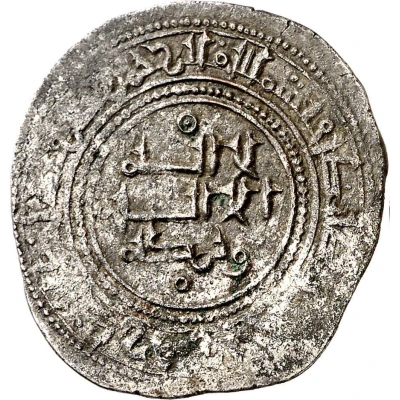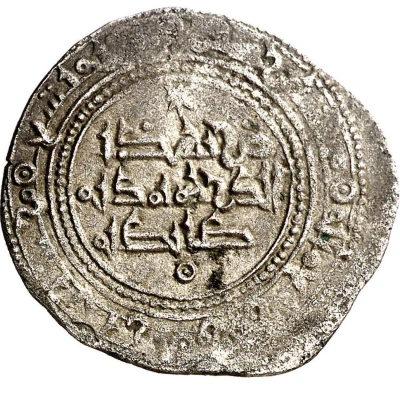


© Aureo & Calicó S.L., subastas numismáticas
1 Dirham - Alfonso VI
479 (1086) year| Silver | 3.08 g | - |
| Issuer | Taifa of Toledo (Al-Andalus and Ceuta) |
|---|---|
| King | Alfonso VI (1085) |
| Period | Castilian occupation (1085) |
| Type | Standard circulation coin |
| Year | 479 (1086) |
| Calendar | Islamic (Hijri) |
| Value | 1 Dirham (0.7) |
| Currency | Dinar (628/632-1598) |
| Composition | Silver |
| Weight | 3.08 g |
| Shape | Round (irregular) |
| Technique | Hammered |
| Demonetized | Yes |
| Updated | 2024-10-05 |
| Numista | N#384763 |
|---|---|
| Rarity index | 100% |
Reverse
Script: Arabic
Edge
Plain.
Comment
A translation from the Aureo & Calicó S.L. auction:Neither Vives nor Prieto could read well the only copy they both knew. In 1994, Rafael Frochoso, Antonio Medina and Tawfiq Ibrahim published an article (NVMISMA 235, page 41ff) with the correct transcription, which includes "the month of Safar" at the beginning of the date, in the border on the back. The copy we present is the same as that article, photographed with number 3, and was also included in the "Supplement" by Canto and Ibrahim to the Prieto catalogue, with number 171. "After the agreed surrender of Toledo (the 10 Muharram 478 AH / 6 May 1085) and its effective occupation by Alfonso VI (27 Muharram 478 AH / 25 May 1085) anonymous fleeces continued to be minted in Arabic characters for a short period (...) "The introduction of the month of minting is a piece of information as enigmatic as it is unpublished, and has no precedent in all of Andalusian numismatics" (from the same article in NVMISMA).
https://www.acsearch.info/search.html?id=8930076
Interesting fact
The 1 Dirham coin from the Taifa of Toledo (Al-Andalus and Ceuta) made of Silver weighing 3.08 g is interesting because it represents a unique blend of Islamic and Christian influences. The coin features Arabic inscriptions and Islamic symbols, such as the crescent moon and star, alongside a depiction of King Alfonso VI, who ruled over a Christian kingdom. This fusion of cultures and religions reflects the rich history of the Iberian Peninsula during the Middle Ages, where Islamic and Christian kingdoms coexisted and influenced each other in various ways.